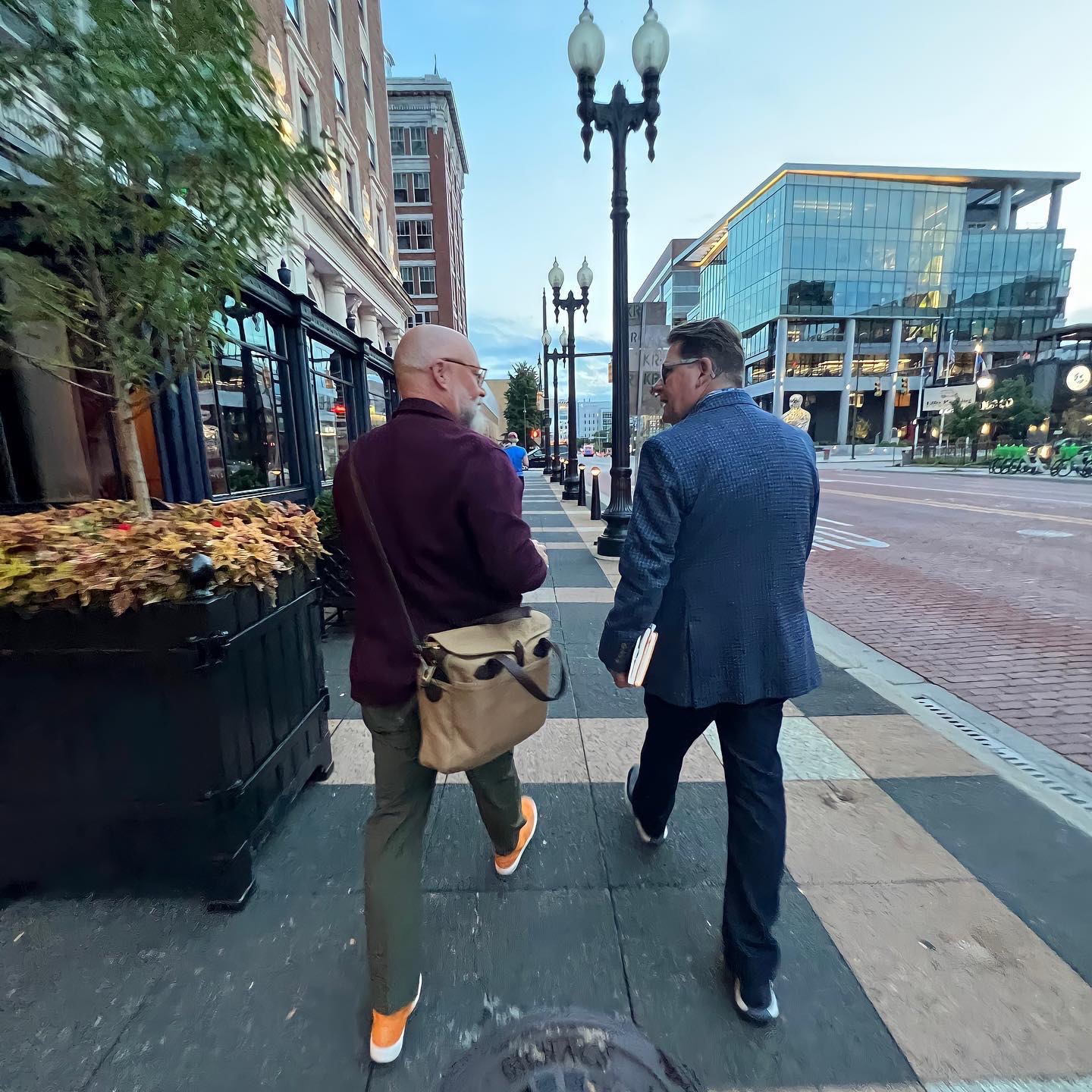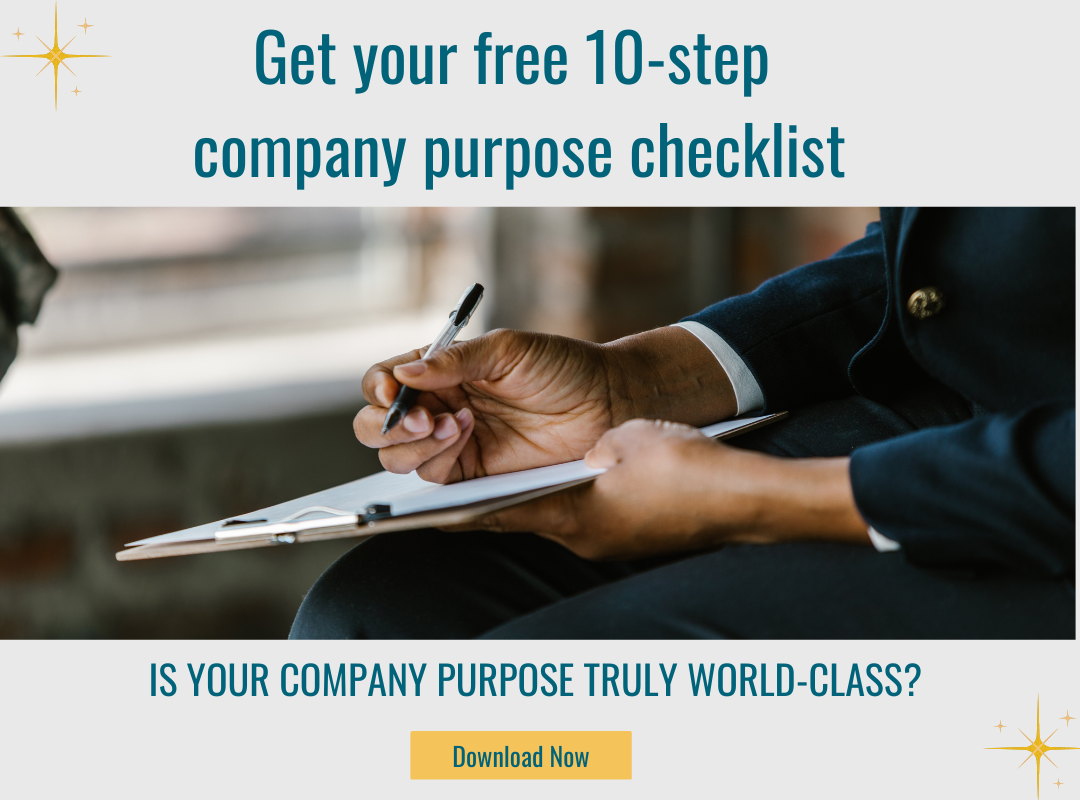3 Companies That Changed Their Purpose Mid-Act
Feb 06, 2023
By Meghan French Dunbar
Let's talk about companies that changed their purpose after they've already been around for a while — in some cases, 20 or 30 years down the road.
Often, when the Stakeholder Business team is working with companies, we hear a similar concern from company leadership: it’s easy to create and commit to a new company purpose when you’re just getting started, but it will be too hard for us to change our company purpose because we’re an established organization. We get it. Change is hard, especially when it’s done at scale.
That said, change can also be transformative. Change — especially when it comes to something as important as company purpose — can be the catalyst to propel your company to the next level. Fortunately, there are leaders out there who have decided to take this leap and change their entire corporate purpose, despite already being established brands. Here are three incredible examples of companies that changed their purpose mid-act.
 Photo: Eileen Fisher, founder of Eileen Fisher
Photo: Eileen Fisher, founder of Eileen Fisher
Eileen Fisher
Eileen Fisher founded her namesake company, Eileen Fisher, in 1984. Her idea was simple: create basic, timeless clothes for women that will last a long time. Fortunately for Fisher, this concept caught hold and she was able to build her private company to a half-billion-dollar enterprise over the span of three decades.
A Chance Meeting
While environmental sustainability had always been a consideration for the company (it actually hired a Director of Social Consciousness back in 1997 — way before it was cool), it wasn’t pushing its sustainability efforts as far as they could go and didn’t center its social consciousness programs as a core purpose of the organization. That all changed in 2014 with a chance meeting between Fisher and Marcelo Cardoso on a trip to the Amazon.Cardoso spoke to Fisher about the power of company purpose, which inspired Fisher to dig deeper and set an ambitious goal.
As a result, in 2015, the company officially announced Vision 2020 — a compelling, first-of-its-kind program to transform the company into a holistically sustainable organization by using sustainable materials in 100 percent of their products by 2020. This new purpose set the company on a path to become one of the most sustainable fashion companies in the world, and it was launched a full 30 years after the company was founded.
 Photo: Ray C. Anderson, founder of Interface
Photo: Ray C. Anderson, founder of Interface
Interface
Founded in Atlanta in 1973 by Ray C. Anderson, Interface manufactures and distributes carpet tiles worldwide. In its first decade, Interface grew enough to become publicly traded in 1984 and, by 1988, the company was regarded as the international leader in carpet tile manufacturing.
A Missed Opportunity
It wasn’t until 20 years after the company’s founding that its true purpose came to light. In 1994, Interface lost a huge sale as a result of the customer asking about the company's environmental initiatives — and Interface coming up empty-handed. In response, Interface created a task force to explore how the company could start exploring environmental issues. When the task force asked Anderson for his vision, he came up blank. At this point, his head of HR handed him The Ecology of Commerce by Paul Hawken.
Anderson referred to reading this book as a “spear-in-the-chest moment.” He realized that Interface was contributing to looming environmental crises, and it shook him to his core. In response, Anderson unilaterally decided to change the purpose of Interface to become a restorative enterprise, and to do so in a way that they would lead all of the industry to follow suit.
Shortly after this moment, Interface set the ambitious goal of becoming a restorative enterprise by 2000. In 1999, though, acknowledging that they weren’t going to hit their initial goal, the company decided to reset the goal to Mission Zero by 2020. By 2020, Interface had reached a 96 percent reduction in carbon emissions, and by 2022 they reached full carbon-neutrality as an organization. The company’s new purpose is taking the initial vision even further through its Climate Take Back program, which strives to have the maximum positive impact possible.

Photo: BIGGBY Coffee co-ceos Bob Fish and Michael McFall
BIGGBY COFFEE
In 1995 in East Lansing, Michigan, Bob Fish made the decision to open a coffee shop in an old Arby’s. The first store was successful enough for him to open a second, where he hired a manager named Mike McFall. Seeing the success that the two stores were having, Fish and McFall decided to become business partners and make the coffee company a franchise.
A Fireside Chat
In the years between 1995 to 2014, the company grew to a 100-million-dollar organization with more than a hundred stores in the Midwest, with immense opportunities ahead. During this time in 2014, co-CEO McFall decided to go on a camping trip with his brother and son. The campsite had one fire pit that connected several sites, which is where McFall ended up meeting a young couple, Nathan Havey and Cari Simon (hint: Havey is one of our co-founders here at Stakeholder Business). McFall's brother asked Havey and Simon about their work, at which point Havey talked about his passion for stakeholder business, specifically referencing the story of Interface as a source of inspiration. McFall didn’t talk about his work at BIGGBY that night, but the next morning handed Havey his card and asked him for a call.
Following an introductory call, Fish and McFall decided to have Havey come in and consult with them on their company culture. An initial employee survey showed that the culture at BIGGBY was… let’s generously call it “open for improvement.” After deploying a number of initiatives to address some of the cultural issues within BIGGBY, Fish and McFall decided to take the leap and engage in the big work: company purpose. In 2016, 20 years after the company was founded, the co-CEOs, along with the rest of the corporate office, voted to adopt the new company purpose: to support you in building a life that you love.
They unveiled a new vision for this larger company purpose in 2017, and have since developed LifeLab, a new department in the company with leadership and culture training to help the BIGGBY team live a life they love. During this process, Fish also realized that their larger purpose was not extending to the suppliers of the company’s raw materials: coffee farmers. He and his wife Michelle uncovered a new passion as a result, and co-founded One Bigg Island in Space, an initiative to develop deep relationships with their producers and ensure that BIGGBY is helping them live a life they love as well, by transforming the way BIGGBY COFFEE sources and buys its coffee. Both Fish and McFall refer to this process as life-changing, and it inspires the company’s direction to this day.
Whether it’s a chance meeting in the Amazon rainforest or at a campsite with the right person, or a book filled with new ideas, or something else entirely, there are certain moments in life that define your path. Fortunately, each of these companies that changed their purpose mid-act did so because certain leaders had the courage to follow their intuition. They then used that life-changing experience to propel themselves and their organizations to the next level, bringing more meaning to their lives and to countless others who are in relationship with their companies. When that inspiration finds you, ask yourself if you’re ready to take the leap. Of course, we hope the answer is yes.

